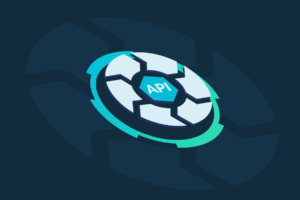What Are DDoS Attacks?
Cybersecurity professionals face many threats, but Distributed Denial-of-Service (DDoS) attacks stand out for their simplicity, destructiveness, and persistence. A DDoS attack uses multiple compromised devices to overwhelm a target system with malicious traffic, rendering services unavailable to legitimate users. Each device sends requests, collectively flooding a server, network, or service to disruption. Attackers build what’s known as a botnet, which is a network of infected machines, often including IoT devices, by installing remote-control malware. Once assembled, attackers activate the botnet to flood targets, exhausting bandwidth, memory, CPU, and/or network resources. DDoS differs from traditional Denial-of-Service (DoS) because the traffic originates from many sources, making mitigation much more difficult.
Why DDoS Attacks?
Attackers deploy DDoS for various reasons:
- Financial gain: Some use DDoS for extortion, threatening prolonged downtime unless ransom is paid.
- Competitive sabotage: Businesses or insiders may target rivals’ operations to gain advantage.
- State or political warfare: Nation-states use DDoS to degrade critical infrastructure or influence public opinion.
- Disruption: Hacktivists or disgruntled actors aim to disrupt operations or make statements.
DDoS Attack Types & Techniques
DDoS attacks operate across different layers of the OSI model, and attackers often combine methods to maximize disruption.
- Volumetric attacks (Layer 3/4) focus on saturating bandwidth using sheer traffic volume. Tools like UDP floods and DNS amplification can deliver massive, terabit-scale floods.
- Protocol attacks (Layer 4/5) exploit weaknesses in network and transport layers. Techniques like SYN floods, ICMP floods, and SSL renegotiation can exhaust server resources or state tables in routers and firewalls. They often require less bandwidth but cause just as much disruption.
- Application-layer attacks (Layer 7) are more targeted. Attackers mimic legitimate users with HTTP floods, Slowloris, or R-U-Dead-Yet (RUDY) to exhaust server threads or back-end logic. These are stealthy and harder to detect.
- Multi-vector attacks combine several techniques, such as starting with a volumetric UDP flood, switching to a TLS exhaustion attack, and finishing with an app-layer flood. This layered strategy forces defenders to address availability threats across the entire stack.
Real-World Incidents
Massive 1.3 Million-Device Botnet Drives DDoS Attack Surge
A botnet with roughly 1.33 million compromised devices drove an increase of approximately 110 % in DDoS activity, especially targeting fintech, e commerce, and telecom sectors. Many of those attacks used amplification/reflection techniques and low to moderate volumes but high repetition. As IoT devices proliferate, botnets of this size will likely no longer be unusual.
Miami-Dade Public Schools Attack
Miami-Dade County Public Schools faced repeated DDoS attacks that crippled its remote learning platform. A 16-year-old student used tools like the Low Orbit Ion Cannon (LOIC) to generate traffic floods, causing widespread disruptions for over 200,000 students. While relatively unsophisticated, the attacks exposed how vulnerable public-sector infrastructure can be to low-cost, high-impact disruption.
Financial Sector Attacks
A series of DDoS attacks known as Operation Ababil targeted major U.S. banks, including JPMorgan Chase, Bank of America, and Wells Fargo. Backed by Iranian state actors, the campaign used Brobot botnets to flood banking websites with Layer 7 HTTP traffic, causing intermittent outages and performance degradation. It marked one of the earliest uses of DDoS as a geopolitical weapon and forced financial institutions to significantly upgrade their defensive posture.
Impacts of DDoS Attacks
When a DDoS attack hits, the fallout can be immediate and wide-ranging. The most visible consequence is downtime; public websites stall, APIs become unresponsive, and customer-facing platforms grind to a halt. For digital businesses, every minute of unavailability translates to lost revenue, eroded customer trust, and brand damage that outlasts the outage itself.
But the damage runs deeper than service disruption. Many organizations scramble to scale infrastructure in response, triggering unexpected cloud spend. Those with auto-scaling risk runaway costs, while those without face outright failure.
Security teams are often forced into reactive mode, taking their attention away from other important initiatives. It’s not uncommon for attackers to use DDoS as cover for intrusion attempts, a tactic designed to overwhelm defenders and mask lateral movement or credential-based attacks.
Preventing DDoS Attacks with Cequence WAAP
The Cequence Web Application and API Protection (WAAP) offering includes highly-scalable DDoS capabilities to protect against attacks that can overwhelm the operation of your APIs and business. Co-locations worldwide ensure comprehensive coverage across the globe with 99.99% availability against common infrastructure attacks. Cequence WAAP offers protection for OSI Layers 3, 4, and 7 attacks including SYN floods, UDP floods, and reflection attacks with always-on network flow monitoring.
Cequence WAAP includes:
- Bot Management
- API Security
- DDoS Protection
- Web Application Firewall
To learn more and to discuss your specific security needs, contact us.





